#python reticulatus
Explore tagged Tumblr posts
Text


Juniper 💛
99 notes
·
View notes
Text
Yawning Python

A Reticulated Python yawning in the former Snake House as it pours outside. Photo credit: Jonathan Chua.
It was pouring outside and the some half dozen pythons were already snuggling up to each other to get warmth.
The Fujifilm X-S1 used here, equipped with a 2/3-inch sensor and slow lens, was not particularly good in low-light condition. I could only manage to get a 1/20 second shutter speed at ISO 800. Thankfully, the image was sharp enough even at actual size.
#photographers on tumblr#flora fauna#fujifilm photography#fujifilm x-s1#Malayopython reticulatus#photography tips#reticulated python photos#snake pics#wildlife photography#wildlife pics
18 notes
·
View notes
Text

Researchers compared reticulated pythons (Malayopython reticulatus), pictured, and Burmese pythons (Python bivittatus) farmed at commercial python farms in Thailand and Vietnam.
Image credit: Shutterstock
#shutterstock#photographer#reticulated python#malayopython reticulatus#snake#python#burmese python#python bivittatus#nature#australian geographic
48 notes
·
View notes
Text

Reticulated Python (Malayopython reticulatus), juvenile, family Pythonidae, Southern Thailand
photograph by Daimler (@daimler__07)
245 notes
·
View notes
Text
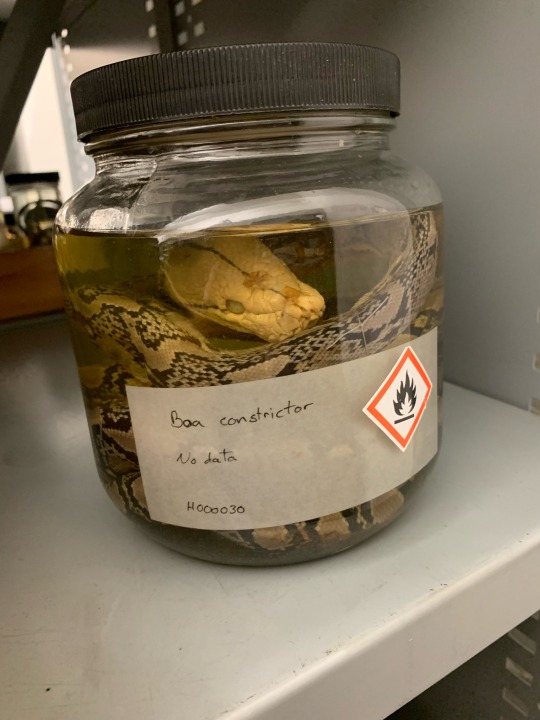
Natural history museums hold innumerable misidentified specimens on their shelves. These specimens make their way into databases like GBIF, and muddy data that is used in global-scale analyses and other research drawing on such records. Careful verification of all specimens in a collection holding tens to hundreds of thousands of specimens would be a Herculean task that could take a dozen experts a decade. So, we often rely on spot checks.
Whilst searching our constrictor collection to see if we have any albino snakes (we don’t seem to), I came across this snake that had been identified as a Boa constrictor. It is in fact Malayopython reticulatus, a reticulated python. A quick new label and an update in our database, and I was able to move it over to the right shelf. Now it won’t muddy the waters further, and is able to be referred to by anyone interested in examining a retic.
How many more such cases are haunting our shelves of over 14 million objects? And that’s just the Natural History Museum of Denmark; there are billions of objects in similar collections globally. This is quite literally an astronomically huge problem.
#snake#animals#museum#natural history museum#natural history#NHMD#ZMUC#So many people on FB have just commented on the picture without reading the caption#it is quite funny#but also I realised this was in the wrong place by a part of the body from several metres away#not exactly sure how this error got made#but ultimately it doesn’t matter anymore
971 notes
·
View notes
Text
daily snake #6

🤎 The Reticulated Python (Malayopython reticulatus), native to South and Southeast Asia, is the world’s longest snake, and third heaviest. They range from 4′11″ to 21′4″, with one reported case being 32′10″! They’re also fantastic swimmers, having colonized several small islands within its range.
26 notes
·
View notes
Text
As an aside, I don't know why Clint recommends a Super Dwarf Retic over a carpet python (Morelia sp). Reticulated pythons (Malayopython reticulatus) are banned in a lot of places and regulations don't make exceptions for subspecies or localities; and often have clauses that don't recognize taxonomic splits to prevent people from looking for legal loopholes. (It's highly unlikely reticulated pythons will ever be legal in Alberta and elsewhere regardless of classification.)
youtube
I did not know Gargoyle Geckos (Rhacodactylus auriculatus) can regrow their entire tail.
I was telling bestie two years ago about how great Crested Geckos (Correlophus ciliatus) are for vegans when she said she wanted a pet gecko some day. But we put a pin that discussion when she said she wanted to buy a house for a large display enclosure first.
One of the problem with Crested Geckos for beginners is they drop their tail randomly for any reason, then novice keepers get upset that it's their fault. And the tail doesn't grow back. Then sometimes people don't like the appearance of the frog butt. So, the fact Gargoyle Geckos can regrow their tail almost entirely will make me shift my recommendations.
#addendum#random thoughts#pythons#Super Dwarf Retic#Reticulated pythons#Carpet pythons#Malayopython reticulatus#Morelia
4 notes
·
View notes
Text

Bali, l'île des dieux, est réputée pour ses plages magnifiques, ses paysages luxuriants et sa culture dynamique. Cependant, sous ses apparences idylliques se cache un lieu qui exige respect et prudence : l'habitat de certains des serpents les plus dangereux au monde. Bien que la majorité de ces serpents soient reclus et n'osent pas entrer en contact avec l'homme, il est essentiel que les résidents et les visiteurs soient conscients des risques potentiels qu'ils encourent.
Le cobra royal (Ophiophagus hannah)
Connu comme le plus long serpent venimeux de la planète, le cobra royal fait peur à beaucoup. Sa longueur impressionnante et son puissant venin neurotoxique en font un prédateur redoutable. Présent dans les forêts et les zones agricoles de Bali, ce serpent préfère éviter la confrontation, mais lorsqu'il est menacé, il soulève son corps du sol et déploie son capuchon emblématique en guise de signal d'avertissement. Les rencontres avec ce serpent sont rares, car il chasse principalement des proies telles que des rongeurs, d'autres serpents et même de petits mammifères.
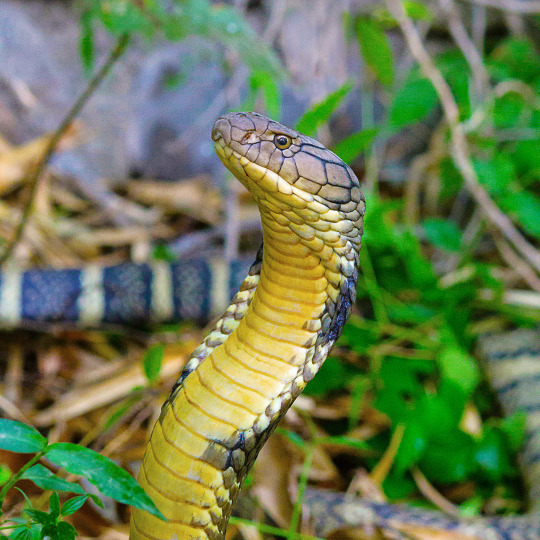
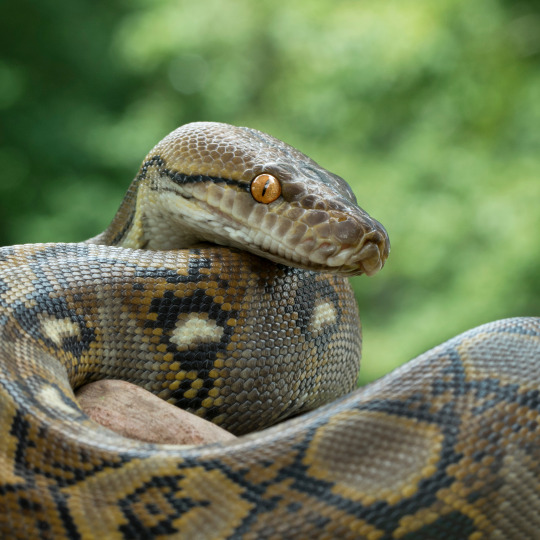
Le python réticulé (Python reticulatus)
Le python réticulé, l'une des plus grandes espèces de serpents au monde, attire l'attention. Bien qu'il ne soit pas venimeux, son immense taille et ses capacités de constriction constituent une menace unique. Ces pythons habitent les forêts de Bali, souvent près des sources d'eau, et sont d'habiles nageurs. Ils s'attaquent aux petits mammifères et aux oiseaux, utilisant leurs puissantes spirales pour extraire la vie de leurs victimes. Les pythons réticulés sont généralement craintifs mais peuvent devenir agressifs s'ils sont provoqués.
La vipère de Pit à lèvres blanches (Trimeresurus albolabris)
La vipère de Pit à lèvres blanches est un serpent venimeux que l'on trouve dans les jungles luxuriantes de Bali. Elle est facilement reconnaissable à sa lèvre supérieure blanche et à ses écailles d'un vert éclatant. Bien qu'elle soit généralement recluse, les rencontres avec cette espèce peuvent être dangereuses en raison de la puissance de son venin.
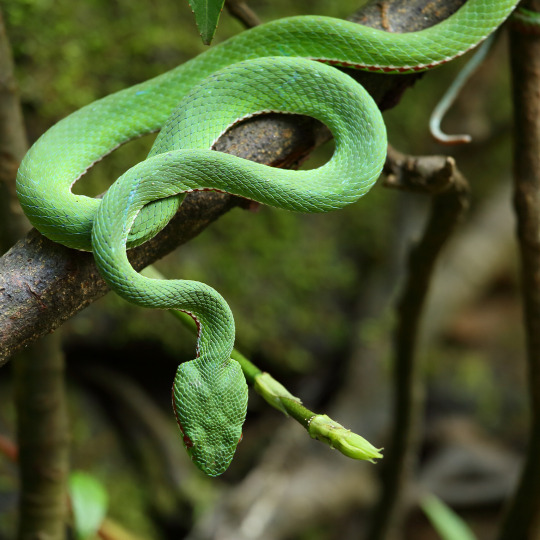
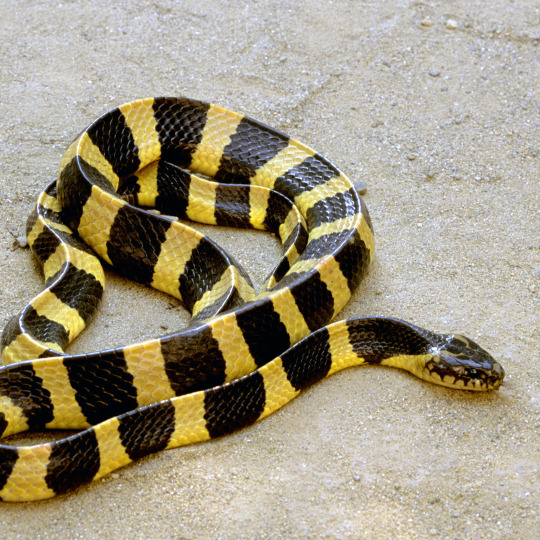
Krait (genre Bungarus)
Le serpent krait est un reptile très venimeux que l'on trouve dans les forêts de la région. Reconnaissable à ses bandes noires et blanches ou jaunes distinctives, ce prédateur nocturne se nourrit de petits mammifères et d'autres serpents. Bien que les rencontres soient rares, leur venin puissant en fait un sujet de préoccupation important pour les habitants et les visiteurs.
Si la simple évocation de serpents dangereux peut faire frémir, il est important de rappeler que ces serpents jouent un rôle essentiel dans l'écosystème. La biodiversité unique de Bali est un équilibre délicat, et la compréhension et le respect des habitats de ces créatures sont essentiels à leur survie et à la nôtre. Si vous avez la chance de rencontrer un serpent dans la nature, la meilleure chose à faire est de garder une distance de sécurité et de le laisser s'éloigner.
Les serpents de Bali nous rappellent que la nature est diverse et impressionnante, mais qu'elle exige notre respect et notre attention. En étant informés et responsables, nous pouvons profiter de la beauté de Bali tout en coexistant harmonieusement avec ses habitants énigmatiques et sauvages.
N'oubliez pas que la prévention est la meilleure stratégie. Lorsque vous vous trouvez dans des zones exposées aux serpents, portez des chaussures appropriées, évitez de marcher dans les hautes herbes ou les broussailles et soyez prudent lorsque vous pénétrez dans des crevasses ou des endroits cachés. Garder une distance respectueuse avec les serpents et être conscient de son environnement peut réduire considérablement le risque de morsure de serpent.
2 notes
·
View notes
Text
✨Charity Tuesday ✨
Tezos for Humanity is a yearly fundraiser event to donate to humanitarian organizations which had it's 2nd round in Oct last year.
@malicioussheep56 was one of the artists who contributed with their artworks.
2 eds are still available:
"Justice and Scale" - 1/5 for 3.33 $XTZ
"Shrewd Monitor" - 1/5 for 3.33 $XTZ
50% of the sales are going towards our charity wallet and will be used for this year's Tezos for Humanity event!
#tezos#tezos community#teia#fundraiser nft#tezos for humanity#art#photography#nature#nature photography
0 notes
Text
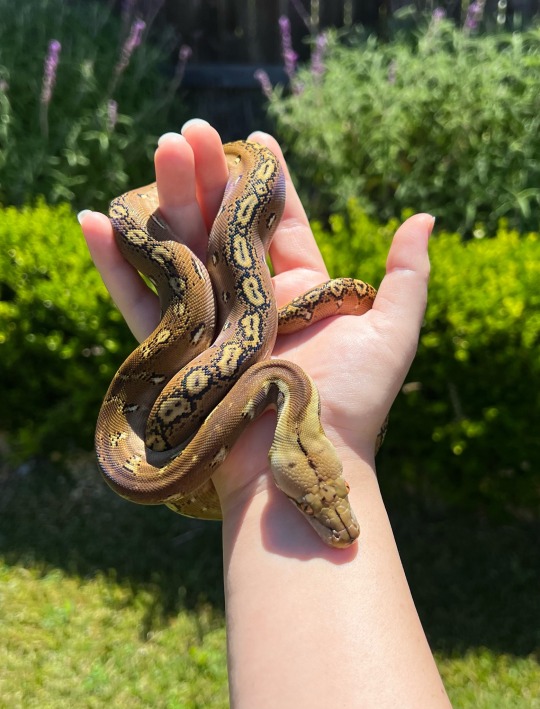

Meet Juniper 🌿💚
66 notes
·
View notes
Text
Mouth Gaping

A Reticulated Python yawning in the former Snake House as it pours outside. Photo credit: Jonathan Chua.
It was pouring outside and the some half dozen pythons were already snuggling up to each to get warmth.
The Fujifilm X-S1 used here, equipped with a 2/3-inch sensor and slow lens, was not particularly good in low-light condition. I could only manage to get a 1/20 second shutter speed at ISO 800. Thankfully, the image was sharp enough even at actual size.
#photographers on tumblr#flora fauna#fujifilm photography#fujifilm x s1#Malayopython reticulatus#photography tips#reticulated python photos#snake pics#wildlife photography
0 notes
Text
…"Trăn có thể nhịn ăn trong vài tháng mà không mất nhiều khối lượng cơ thể. Điều này khiến chúng trở nên lý tưởng để nuôi trong điều kiện nguồn cung cấp thức ăn và nước uống không được đảm bảo".
Bằng việc nghiên cứu 2 loài trăn phổ biến ở Thái Lan và Việt Nam, có tên khoa học lần lượt là Malayopython reticulatus và Python bivittatus, các nhà nghiên cứu phát hiện rằng tỷ lệ thức ăn tiêu thụ của trăn so với lượng thịt sản xuất ra thấp hơn nhiều so với các loài được nuôi để lấy thịt khác.
Cụ thể, tỷ lệ này ở trăn đạt 1.2, so với 1.5 đối với cá hồi, 2.8 đối với thịt gia cầm, 6.0 đối với thịt lợn và 10.0 đối với thịt bò. Trong đó, tỷ lệ thấp hơn có nghĩa là hiệu quả cao hơn.Nói cách khác nếu nuôi trăn, người chăn nuôi có thể đạt lợi nhuận cao hơn, với một chi phí thấp hơn dành cho số tiền mua thức ăn.
"Việc nhân giống và nuôi trăn trong các cơ sở nuôi nhốt để lấy thịt hoặc kinh doanh là hoàn toàn khả thi về mặt sinh học và kinh tế", các nhà nghiên cứu của dự án cho biết…
0 notes
Text
"Reticulated Python"
2019

Reticulated Python (Malayopython reticulatus)
#reticulated python#python#snake#squamata#animals#animal art#wildlife#wildlife art#photoshop#art#artists on tumblr#mexican artist#autistic artist#dartxo
1 note
·
View note
Text

Reticulated Python (Malayopython reticulatus), 12.5 ft long, family Pythonidae, western Thailand
photograph by Mike Pingleton
215 notes
·
View notes
Photo
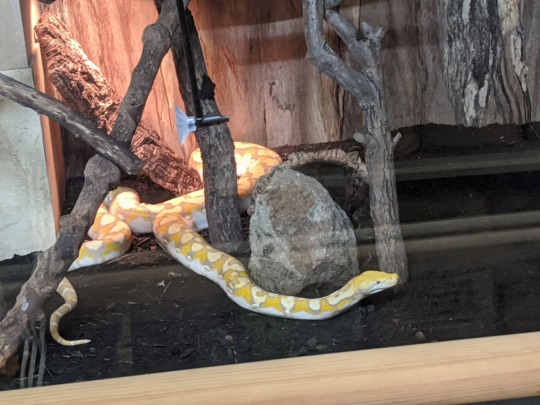
Species: Python reticulatus / Malayopython reticulatus
#world snake day#reticulatedpython#python reticulatus#Malayopython reticulatus#thailand#seasia#asian snakes
3 notes
·
View notes